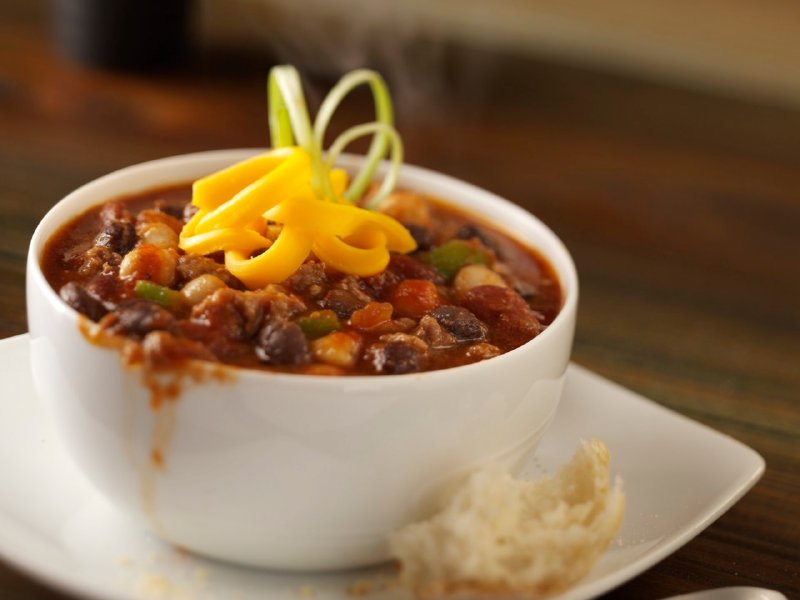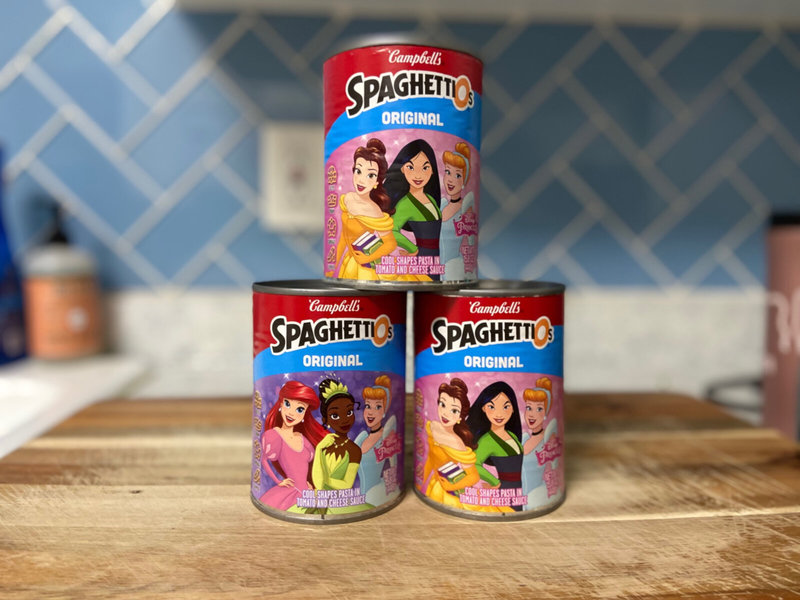For the sixth straight year, October is Dining Month on OnMilwaukee.com, presented by Concordia University. All month, we're stuffed with restaurant reviews, delectable features, chef profiles and unique articles on everything food, as well as the winners of our "Best of Dining 2012."
Jennifer Janz has been a food stylist for more than 20 years. So how has she not gained 100 pounds?
"It’s funny, a lot of people ask me why I don’t feel tempted to eat the food," she said. "Honestly, when I’m working in it – I mean, my hands are, like, in the food, you know? It almost becomes something else. I really don’t think of it as food anymore."
For a food stylist, it’s all strictly business.
Janz holds a degree in visual communication from the University of Wisconsin-Milwaukee and began her career as a graphic designer. But she soon tired of sitting behind a desk and was drawn to the world of photography – where she was subsequently introduced to the (literally) hands-on profession of food styling.
"It was my art background that drew me to it. I have a passion for art and design, working with my hands," she said. "Food has always been an interest of mine more than a hobby. I never wanted to be a chef. I think of myself as a food artist. Food just happens to be the medium that I work in."
Now she works long days on the sets of photo shoots for magazine covers, ad campaigns, television commercials and even cooking shows. Her clientele includes Sara Lee, McDonald’s, Saz’s, Cedar Crest Ice Cream, Klement’s Sausages, Starbucks and Culver’s.
Most consumers don’t realize that the task of making food appear appetizing is a full-time job. It is, and furthermore, food styling requires a truly unique skill set. Janz has seen plenty of restaurants that think they can do without a food stylist and end up with a low-budget menu featuring DIY photography and uninviting or even unrecognizable images.
"You see a lot of photos that you can’t quite tell what the food is because they weren’t thinking from the camera’s eye," she said. "They were thinking, ‘OK, this smells good, this looks good from where I’m standing' – but they’re not thinking about the camera."
It is Janz’s job to think about food through a lens. In a process that she calls "almost scientific," she and her team will set up a shot, analyze the results and agonize over additions like an eye-drop of ketchup here or a brush of oil there.
The results are hard to argue with. Her personal website, afabulousfoodstylist.com, features a portfolio of mouthwatering images that look good enough to eat.
Janz sat down with OnMilwaukee.com to share some tricks of the trade – like how to style melting ice cream, revive droopy cheese and make that burger look irresistible.
Cake
A devil’s food cake may look tempting in the magazine’s cover photo, but take a bite out of it and you’ll end up with a mouthful of toothpicks.
"It’s really a matter of constructing and building and making sure that the cake is going to look level and it’s going to look right for the camera," Janz said.
Photo shoots will typically last upwards of 10 hours, so her challenge is making sure that the layers of the cake are steady and perfectly even. She uses toothpicks and wads of foil to keep the layers in place. And she will only frost the portions of the cake visible to the camera. "If you were going to stand behind the cake, it’s totally unfrosted and there’s, like, foil and toothpicks everywhere."
Burgers
Again, toothpicks save the day.
"I have to make sure there are toothpicks in several places all the way through the burger, the cheese, the pickles, the onions, so it’ll hold everything in place," she said.
Janz also likes to make sure she has plenty of variety to choose from. "For a live TV spot, I probably have 250 burgers – so it’s picking the four best ones. And I’ll have probably a hundred buns. And once it sits for too long, the meat starts to get too dark and then I just have to replace it with another one. With a burger, you want to make sure it’s not cold. Brushing it with vegetable oil will keep in looking really shiny and juicy."
Styling burgers introduces another important component of Janz’s job: managing an assembly line.
"If it’s a big production, there will usually be at least two food stylists and another assistant, so somebody is constantly getting ready for the next burger," she said. "So I could be onset making sure the burger’s looking good, and my assistant will be cooking the next one, and the next one, so there’s a constant stream that can be flowing in. A lot of stuff needs to be replaced pretty quickly."
Toxic turkey
"A turkey can pretty much sit there at a shoot – I won’t say all day, but a good four or five hours easily," she said. "The trick is undercooking them so they don’t get all shrivelly. So you’re just cooking them for the skin to look nice."
But the tasty-looking bird is for show only.
"Of course, they become toxic, as well, after maybe an hour (or) an hour and a half at the most," she laughed. "So you need to warn everybody at the studio if they touch the turkey then they need to wash their hands. That part’s a little frightening because some people do want to eat the food, and I have literally had to wrestle people for food before."
Ice cream
Janz cited ice cream as one of the most difficult foods to style.
"Real ice cream is pretty hard. You have to freeze it on dry ice, get it rock solid and then you have a little more time with it but still, it’s not a lot before the edges start to get soft and drippy," she said.
Fake ice cream is a convenient alternative, but Janz will only use it for a shoot where the ice cream itself is not the object on display. "Fake ice cream is made with powdered sugar and Caro syrup and margarine," she explained. "And that we would use if just, say, the hot fudge is the main product."
Chili
They say the cream always rises to the top – but in the case of chili, it’s the beans that have to.
For a "Taste of Home" magazine cover featuring chili, Janz made sure that the bottom of the bowl was heavily layered with the chunkiest of the chili’s ingredients so that, using tweezers, she could arrange the meat, beans and vegetables on top to her satisfaction.
"And then I just added a little bit of the liquid on top around it," she said. "I’m taking my tweezers and I’m putting, one by one, each bean and each chuck of meat on the top, so I’m kind of planning where everything can be and then I can add liquid with eyedroppers in just the right places."
Tools of the trade
In addition to her trusty tweezers and eyedroppers, Janz also utilizes a charcoal starter to make grill marks on brats or burgers. For melting cheese, she relies on a mini soldering iron to melt and a steamer. "I use a steamer to melt cheese on a larger area like a pizza," she said. "Melting cheese is another difficult thing just because melted cheese only looks good for less than 30 seconds. You can revive the cheese a bit with a steamer and get maybe another 10 seconds out of it."
The customer is always right
"I have some clients that really aren’t sure what they want walking in but they’ll know it when they see it," she said. "Other clients have hired ad agencies, so they have art directors there and they’re very precise and know exactly what they want. So it depends."
But no matter what the request, Janz said that the process of food styling is a deeply collaborative one.
"I view my job as really being the vehicle for the client to get what they want," she said. "If they ask me what my opinion is, obviously I would say it, but a lot of times it’s somebody else’s vision and I am there to help facilitate that, really."
Colleen Jurkiewicz is a Milwaukee native with a degree in English from the University of Wisconsin-Milwaukee, and she loves having a job where she learns something new about the Cream City every day. Her previous incarnations have included stints as a waitress, a barista, a writing tutor, a medical transcriptionist, a freelance journalist, and now this lovely gig at the best online magazine in Milwaukee.







